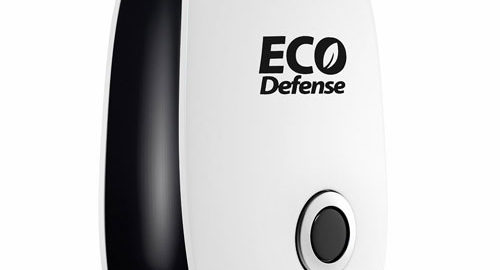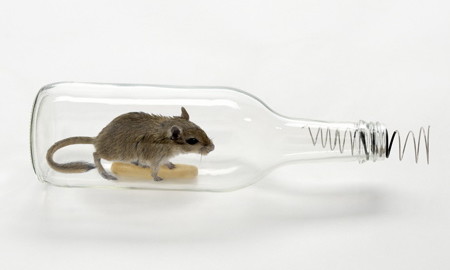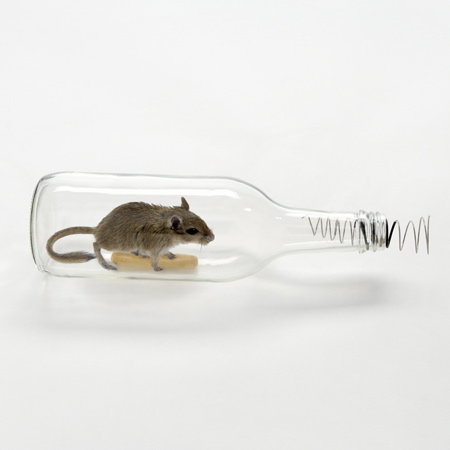Either as a last resort or as part of an integral pest management plan, ultrasonic pest repellers can save you a lot of nuisance and additional pest control costs.
Whether you have an ant problem, roaches terrorizing your home, or mice trotting down your kitchen floor, ultrasound may help you ward off these little buggers.
Especially if you’ve tried everything such as traps, powders, Hot Shot mixes, Dupont gels, and baits and whatnot.
It must be noted that they’re not an end-all cure but these little gizmos do offer some advantages (provided that they work, more about that in a bit).
Instead of messing with poisons or other chemical compounds and time-consuming traps that require maintenance you may be considering an easy plug-and-play repeller.
They offer a safe way of getting rid of pests when compared to sticky traps, gels and liquid baits, rat pastes, and other chemicals that are potentially hazardous when children and pets are present.
But let me guess, you were wondering, do they actually work?
Critical customers will want to do their due diligence and find out if ultrasonic pest control devices actually work before making a purchase.
Admitted, the premise of a ‘supersonic’ gadget being able to rid pests sounds shady. Yet, when properly used, you can definitely use them to your advantage.
Another essential question that rises; how should you use them?
Also; which one is best for your specific situation? Do you need to get a dedicated rodent repellent or does an all-purpose device suffice?
How do ultrasonic pest repellers work?
These devices send out short wavelength, high frequency sound waves into the ultrasonic range that are unbearable to rats, roaches, ants and other pests.
Ultrasonic repellers cause distress in these creatures as they target the nervous system of pests . This may cause confusion and seizures among critters and even kill the pests.
The high-frequency sound they emit is in-audible to the human ear and safe to use around children. These gadgets operate on electricity either by batteries or by being plugged into a socket.
Ultrasonic means sound of more than 20,000 Hz.
They emit frequencies around 20,000 Hertz which we humans can’t hear whereas critters may be seriously disturbed by it.
For instance; grasshoppers hear ultrasonic sound ranging from 50,000Hz to 100,000Hz and moths can hear sound up to 240,000Hz.
Which pests can be repelled?
These devices may work on a variety of pests including; mice, cockroaches, fleas, bats, flies, ants, spiders, rodents, squirrels, raccoons, and opossums.
Do ultrasonic pest repellers really work?
The short answer. Yes they do live up to their claims but it requires proper application and depends on which type of pest you want to repel.
However, don’t expect a magic bullet. Studies indicate that some of these products show results with certain pests.
Yet, study results are mixed. Keep in mind that none of these gadgets shows 100% effectiveness on any pest.
Because every type of animal is different, their ability to hear ultrasonic sound varies. And thus their tolerance fluctuates meaning that it depends on which frequency you are utilizing on which type of creature.
Various animals, such as rodents, bats, insects, moths, and dogs can hear well into the ultrasonic range. Some can detect higher frequencies than others.
Not all tested devices turned out to be effective
Researchers concluded the following.
“Ultrasound and Arthropod Pest Control” (2001), an extensive Kansas State University study,[1] confirmed that ultrasonic sound devices do have both a repellent effect as well as reduces mating and reproduction of insects. However, the results were mixed, and ultrasonic sound had little or no effect on some pests.
What to consider before buying an electronic pest repeller
Keep in mind..
To set realistic expectations. Studies show that ultrasonic pest control devices can cause a pest decrease, not a complete eradication of rodent and insect infestations.
And to be aware of diminishing returns. Pests may become accustomed to the specific wavelength of your ultrasonic device, thus, results could just be temporary.
Mice get used to the ultrasonic waves, you will have to kill them or get rid of them humanely.
Read the money-back small print. To ensure a so called ‘ 100% satisfaction rate ‘ many manufacturers offer a money back guarantee. If this is important to you, make sure to check the terms. Some brands offer a 30 days money-back guarantee which often is too short as devices may only start to work after a few weeks. Some brands have a 90 days refund policy which seems more realistic.
How to use these devices?
Besides picking the right type of repeller there’s also proper placement and knowing how to properly use these devices.
Size: an ultrasonic repeller should be appropriate to the size of the room it will be used. Getting those spiders in your bathroom to move on will require a smaller device then if you need to shoo squirrels from the attic.
Action radius: Make sure to take the action radius into account. A specific device may for instance repel pests within an action radius of 200 m².
This may suffice for keeping squirrels out of the garage but will not keep Fido from next door out from pooping in your strawberry beds.
For most models goes: use one in each room you want to keep pest free.
“Ultrasonic waves are aimed at a direct spot to (potentially) repel pests from that spot.”
Obstructions: the sound does not travel through walls so if you need more than one room to
Choose proper locations. Ultrasonic pest control devices emit weak and short range sound waves which are easily blocked by walls, furniture, and corners.
Ultrasonic pest repellent tip:
Don’t rely solely on these gadgets.
Use traps too. Continue (or start if you haven’t already) using traps. Whether you need to get rid of insects or rodents (or both) ultrasonic pest repellents work best in conjunction with trapping. Ultrasonic sound waves make the pests to scamper, driving them into the traps.
Are my pets affected?
If you’re trying to tackle a mice problem, the last thing you’ll want is to scare your cat away with your new ultrasonic pest repeller.
After all, Kitty does a terrific job in keeping the mice population down. Rest assured, ultrasonic sound is not audible to cats and dogs.
Do keep in mind that your beloved Gremlin the gerbil and Cottonball the hamster or other pet rodents may not be amused with your new device.
It’s commonly thought that birds can hear these high-pitch ultrasonic sound too but this is a myth. So your repelling device won’t work on scaring those pigeons away.
Which types of pest repellers are there?
Ultrasonic pest repellers come in different categories such as bug repellers, rodent repellers but also dog repellents, cat repellents (to keep the neighbor’s cat from shitting in your shrubbery). When it comes to bug and rodent repellers there’s basically plug-in repellers and corded units. The latter being more costly and often more powerful.
Ultrasonic Pest Repeller Reviews
Top 4 best electronic pest repelling devices
1. Best for mice and other rodents
Victor M792 Heavy-Duty Sonic PestChaser
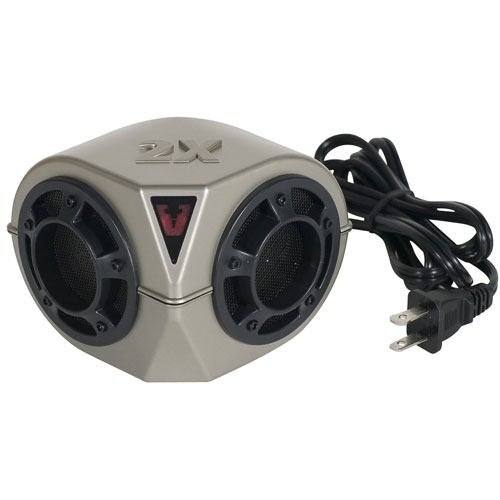
Even though this device has an average 3,5 star rating on Amazon it’s always wise to take a close look at the negative reviews.
Opinions on the efficacy of Victor’s PestChaser vary widely. User experiences range from ‘does not help’ such as the comments on this YouTube video to ‘works wonderful’ and ‘ finally helped me get rid of pests’.
The bad reviews are likely to be largely caused by customers not having followed the instructions in the manual. As it explains, it’s crucial to first get rid of the mice in case you already have a mice problem (i.e by using traps or poison). This device works merely as a preventative measure.
Also important to know, some people claim they can hear the sound which they often find annoying.
This makes this particular device potentially better suited for a basement than the living room. For areas in the home where people actually live Victor’s NightLight would be better suited.
2. Best for cockroaches
BugzOff Pest Control Ultrasonic Repellent
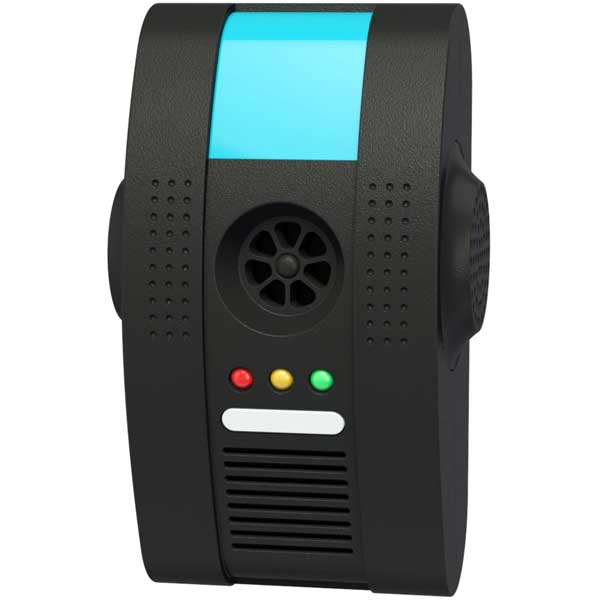
Although advertised as an effective ultrasonic repelling device for all kinds of pests this device shows to work better for cockroaches and other insects such as flies and mosquitoes.
When used properly and/or in combination with additional pest control measures this device seems to work well for many users. No more spraying chemical and potential hazardous Baygon and Delamethrin. Functions as a night light too.
“The main thing it seems to do is make it easier to kill cockroaches. Not sure if it actually repels them. Also seems to deter spiders. Doesn’t keep ants at bay at all.”
3. Best for mice, ants, and bugs
Aspectec Home Sentinel 5 in 1 Repeller
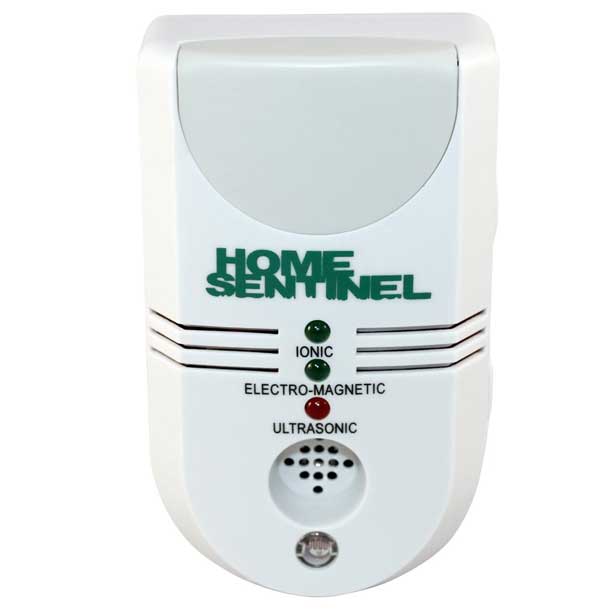
Aspectec’s ultrasonic, ionic, and electromagnetic Home Sentinel comes with a money-back guarantee, has a ‘ pet-safe’ setting so it doesn’t scare off your dog or cat, and proofs to work well on keeping mice and other pests out. You do have to place one in each room that is infested. Possible more than one in case of large rooms.
4. Best for ants, flies, spiders, and mosquitoes
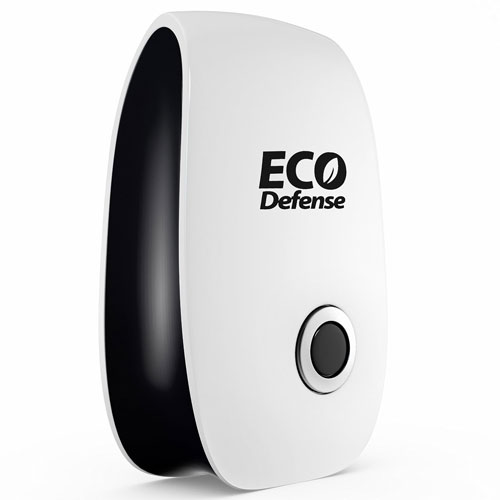
Don’t expect too much of the blue light as it’s pretty drab. User reviews are mixed as the Eco Defense pest repeller seems to work for some whereas others are sure it doesn’t do a thing. Overall the most positive reviews mention the Eco Defense being able to ward off spiders and flying insects. Mice and rats seem to care less about this gadget.
Are they safe to use?
Yes, ultrasonic repellers are safe around pets and humans. For this reason, and because of minimal intrusiveness, affordability and longevity, pest repeller devices that use high-frequency sounds are gaining popularity.
You may also like:
